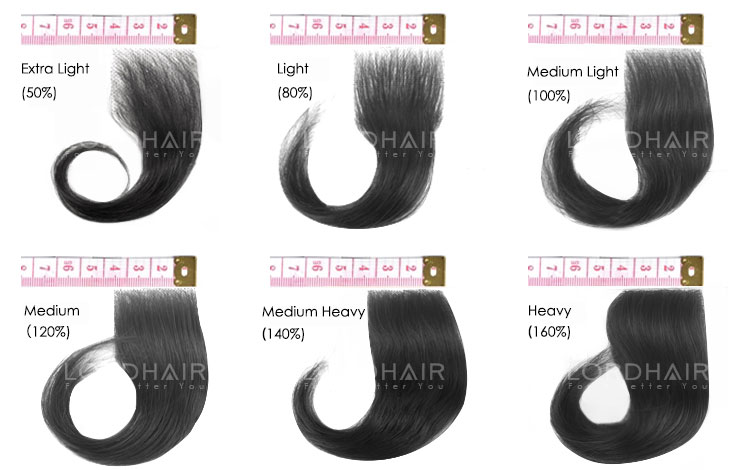Do I Have Thick Hair? How to Find Your Hair Type and Density
Table Of Content

"You can optimize the growth cycle by using the apple stem cell serum and a dermaroller to amplify the stem cell growth." Thick hair does not necessarily give a sign of good hair health. If the methods mentioned above require too much of an effort, you can always switch to weaves. Weaves are hair extensions that add to you hair volume and length. Consider the ethical considerations involved in collecting sensitive personal information like this. Be aware if companies adhere strictly to confidentiality measures, such as using anonymized datasets instead of raw user profiles for research purposes.
Genetics
How to get thicker hair plus what causes thin hair - USA TODAY
How to get thicker hair plus what causes thin hair.
Posted: Thu, 07 Sep 2023 07:00:00 GMT [source]
Formulations enriched with natural butter, oils, waxes, and high cationic polymers like polyquaternium 7 or 10 are recommended for optimal results. This article will delve into the factors influencing your hair, offering guidance on tailoring care to its specific needs. Understanding your hair is vital; a deeper comprehension of its science equips you for successful management and styling.
Scalp irritation
While damaged hair may look lifeless and dull, it is actually more susceptible to breakage than healthy hair. Adopting good hair care habits, such as using gentle shampoos and conditioners and protecting hair from heat damage, is crucial for maintaining its health. In contrast, individuals with low hair density benefit from a lighter formulation.
Appearance

If you can see your scalp even without parting your hair, you probably have low hair density. In the float test, hair strands are placed on the water surface—sinking indicates it is porous (high porosity), while floating suggests non-porosity (low porosity). However, this method is flawed due to factors like water pH, temperature, and the presence of salt, influencing wettability and hence must be maintained.
Hair with high ellipticity, such as kinky coily hair, tends to be more fragile and prone to breakage. Understanding the importance of hair density is essential as it influences the tailored care your hair requires. Hair density represents the “number of hair fibers per unit area of the scalp.”1 . Understanding the unique properties of your hair is the key to effective hair care.
How to select products based on density
Depending on your density, you will want to adjust the amount of product you apply because you will have more or less hair to cover. Low density hair will require less product, and high-density will require more. The three types of hair density are referred to as low, medium, and high. Along with genetics, studies show that aging plays a major role in how dense our hair is. As we get older, our hair can become thinner or less dense naturally. This is due to more hair remaining in the resting phase of the hair growth cycle, resulting in more shedding.
Low Density Hair vs High Density Hair - Characteristics of Low and High Density Hair
You also may want to avoid products that contain heavy oils and butter ingredients, and those that have a very thick consistency. If you have medium or high density hair, you can also use lightweight or medium-weight products if your goal is to maintain volume. Medium density hair will typically do best with light to medium-weight products and can use a range of styling creams, gels with a jelly-like consistency, foams, and mousse. Something like the Hold Me Softly Style Balm or the Curl Defining Styling Soufflé for example. Medium density hair may also tolerate heavier-weight products if only a small amount is used. If you have medium or high density hair, you can also use lightweight or medium-weight products if your goal is to maintain volume.
How Can You Measure The Density Of Your Hair?
On the other hand, Caucasian hair with low ellipticity benefits from a less concentrated formulation. Applying high levels of oils and polymers to such hair can result in greasiness and potential scalp problems, as mentioned earlier. The measurement involves assessing the variation in diameter along the x-axis and y-axis. The numerical value for ellipticity is derived from the ratio of these two axes, with a perfect circle having a value of 1. However, this abundance of hair fibers can pose challenges during wet or dry combing. Formulations rich in polymers and emollients are recommended to facilitate detangling and ensure ease of combing.
Use Products That Enhance Your Hair Volume
For example, African hair tends to be thicker and more tightly coiled compared to Caucasian hair. In addition to knowing your density, it's important to understand how thick or fine each individual strand is as this affects overall volume and texture. Ultimately, understanding hair density is key to achieving the desired hair look and feel.

Keep reading to find out whether you have thin vs. thick hair. That’s why we’ve created this guide to help you get up close and personal with hair density. If you’ve ever wondered about the density of your hair — low, medium, or high — you need to bookmark this article ASAP. If you have a thicker head of hair than average, it’s likely because both of your parents did as well. You may be wondering how you can benefit from your parents’ genetics even if you didn’t get their hair. The answer is that you inherited certain genes from your parents that are passed on to you.
The American Academy of Dermatology recommends that you air-dry instead of using a blow dryer. People with 2C hair may be frustrated with alternating between daily straightening, which can damage hair, and trying to find ways to enhance and control their waves. The good news is that many lightweight mousses now contain anti-humidity ingredients along with moisture. The wave pattern may begin close to the crown and tumble downward. Type 2C hair is often thick and can be prone to frizz in damp weather. Every time your hair goes through its growth cycle, those genetic characteristics are reasserted.
Understanding the intricacies of hair density is a vital step on your journey to achieving the luscious locks you desire. Consult with a dermatologist or hair specialist for medical treatments like PRP therapy or laser therapy, which can stimulate hair growth. Yes, it is possible to increase hair density, but it's essential to have realistic expectations and be patient in your journey to achieve it. Several factors can influence changes in hair density, both positively and negatively.
Thicker gels and creams are usually ideal for high density curly hair. Multiple studies have found that hair density peaks at around 27 years and begins to decrease after the mid-thirties. As you grow older, your hair follicles – which are the roots of hair strands – slow down in their cycles of growing new hair every time it falls.
So, whether you have thin, thick, or somewhere in between hair, let's delve into the world of hair density. In this article, we'll break down the ins and outs of hair density, its importance, benefits, and even explore alternatives. You want straight or rounded ends (over feathered cuts or layers) to create more weight and add fullness to your style. Since density boils down to your DNA, the only change that can occur is if there is damage to the follicle. If you think your lack of hair density is due to follicle damage, it's best to visit your local trichologist to get a proper assessment. Reversing follicle damage is very difficult—and perhaps impossible in some cases—so you'll need professional help.
Comments
Post a Comment